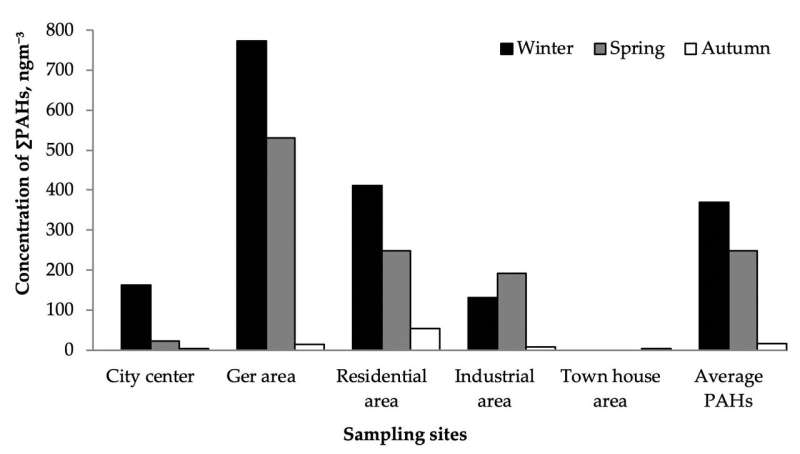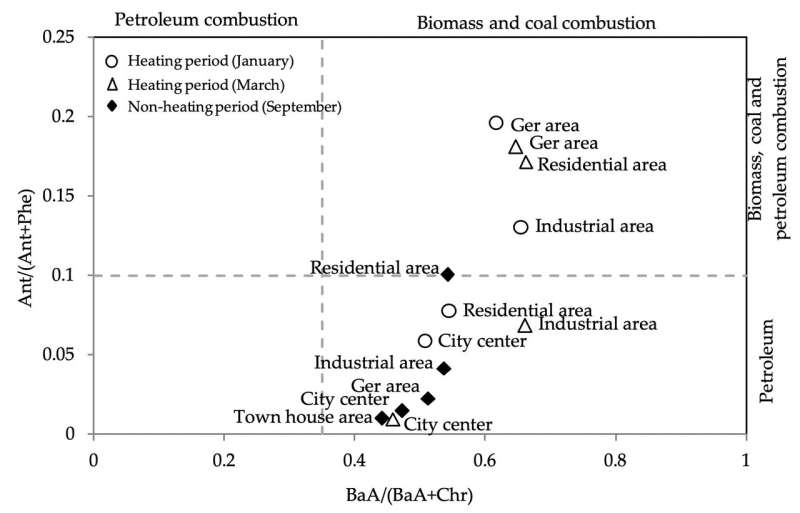Unravelling the complexity of air pollution in the world's coldest capital city

A joint Mongol-Japanese research team from the National University of Mongolia and Kanazawa University conducted the first detailed study of organic air pollutants in Ulaanbaatar city. The polycyclic aromatic hydrocarbon (PAH) contents of airborne particulates were determined, and indicated that the degree of air pollution varies markedly by district and season.
Ulaanbaatar is often called the world's coldest capital city because the temperature can reach -40 °C on winter nights. The harsh climate causes each household in a ger (a traditional Mongolian house) to consume >5 t of raw coal and 3 m3 of wood each year. The increasing population and demand for energy in Ulaanbaatar in recent years has caused air quality to deteriorate markedly. Poor air quality poses serious threats to the health of the inhabitants of Ulaanbaatar.
The fine particulate matter (e.g., PM2.5) mass concentration is often used as an ambient air pollution index. PM2.5 concentrations have often been found to be even higher in Ulaanbaatar than in heavily polluted Asian megacities. However, the PM2.5 concentration is calculated from the mass of particles and does not take into account the toxic chemicals sorbed to or contained in the particles.
Polycyclic aromatic hydrocarbons (PAHs) are mainly produced when organic matter is imperfectly combusted and pyrolyzed. PAHs are suspected to be largely responsible for various symptoms related to air pollution (e.g., allergy, asthma, cancer, and reproductive disorders).
This study was the first of its kind to be performed in Ulaanbaatar. The aim was to characterize spatial and temporal variations in particulate-bound PAH pollution, identify the pollutant sources, and assess the health risks posed.

Suspended particle samples were collected in five districts in Ulaanbaatar during the heating and non-heating periods of 2017. The samples were analyzed, and the concentrations of 15 PAHs with two-six benzene rings were determined.
The highest total PAH concentration (773 ng m-3 in January 2017) was found in an area containing gers. The total PAH concentrations decreased in the order residential areas > industrial areas > city center > townhouse areas. The mean PAH concentration in late summer was 23 times lower than the mean concentration in winter and 15 times lower than the mean concentration in spring.
Specific PAH markers indicated strong influences from coal and wood combustion, particularly in an area containing gers in the heating season.
The results indicated that there is a direct link between high PAH concentrations in certain districts of Ulaanbaatar and the types of fuel used. The results also indicated the dilemma faced by the city: residents must choose between heating and improving air quality.
Prolonged exposure to polluted air in winter gives a high lifetime cancer risk, indicating that there is an urgent need for dramatic mitigation measures to be implemented. The results provide evidence for developing effective, scientifically based, air pollution control strategies.
More information: Batdelger Byambaa et al. Sources and Characteristics of Polycyclic Aromatic Hydrocarbons in Ambient Total Suspended Particles in Ulaanbaatar City, Mongolia, International Journal of Environmental Research and Public Health (2019). DOI: 10.3390/ijerph16030442
Provided by Kanazawa University















